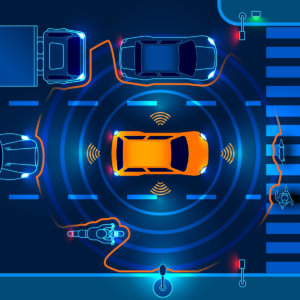To achieve improved fast-model training, data scientists and researchers need to distribute deep learning across a large number of servers. However, most popular deep learning frameworks scale across GPUs or learners within a server, but not to many servers with GPUs. The challenge is, it’s difficult to orchestrate and optimize a deep learning problem across many servers, because the faster GPUs run, the faster they learn. GPUs also need to share their learning with all of the other GPUs, but at a rate that isn’t possible with conventional software. This functional gap in deep learning systems recently led an IBM Research team to develop distributed deep learning (DDL) software and algorithms that automate and optimize the parallelization of large and complex computing tasks across hundreds of GPU accelerators attached to dozens of servers.
7 types of malware you need to look out for
Bots drain the resources of the infected person’s systems, and they might be causing the computer to be part of a criminal enterprise. They are also commonly used for spambots (which spam computers with ads) and botnets (which are used for distributed denial-of-service attacks). Ransomware is quickly becoming the most notorious type of malware. It’s most famous iteration is WannaCry, which infected hundreds of thousands of organisations across the globe in May 2017, but it was unlike most ransomware in that its scope was massive (because of its worming capabilities). Most ransomware is spread through phishing emails, which offers a more controlled scope. A PhishMe report from last year found that ransomware was delivered in 97% of all phishing emails. Different types of ransomware can operate in slightly different ways, but they all encrypt files and/or lock computers until victims pay for a decryption key.
10 Ways AI and Chatbots Reduce Business Risks

Thanks to advancements in both these fields, AI-powered virtual assistants can now learn independently and provide assistance to consumers without any additional human intervention. Chatbots can also be used as fantastic internal-facing tools. Creating a quality chatbot to help your team is like providing everyone with an assistant. Although it will have limitations at first, using an internal-facing bot can help you speed up your internal processes and create an efficient communication network for all of your workers. The best part about implementing a chatbot is that you won't need to hire developers or cover expensive fees. Thanks to platforms like my company ChattyPeople, you can create bots for free and in a matter of minutes. Best of all, it uses a purely visual interface, so you won't need any coding knowledge to create an AI-powered chatbot. Plus, chatbots can be integrated into a huge variety of channels, including Facebook Messenger and Slack.
AI and IoT set to be major investment trends in 2018

More than half of the organisations surveyed expect to invest over £10 million in digital technologies such as AI, cloud, robotics, analytics, blockchain, the IoT and virtual and augmented reality. Across these technologies, seventy three per cent said they plan to invest in robotics, 63 per cent will invest in augmented and virtual reality, 62 per cent will invest in wearables, 54 per cent will invest in biometrics and 43 per cent will invest in blockchain. The leader of UK digital transformation at Deloitte, Paul Thompson offered further insight on the firm's first Digital Disruption Index, saying: “The first edition of the index shows that few UK businesses are successfully exploiting digital technologies and ways of working. Strategies are not coherent, investment levels are modest and the relevant skills are in short supply. As a result, the UK isn't living up to its digital potentional.”
Hadoop Security Issues and Best Practices

It wasn’t all that long ago that Hadoop in the enterprise was primarily deployed on-premise. As such, informative confidential data was safely confined in isolated clusters or data silos where security wasn’t a problem. But thatfastly changed as Hadoop developed into Big Data as-a-Service (BDaaS), took to the cloud, and became surrounded by an ever-growing ecosystem of softwares and applications. And while these innovations have served to democratize data and bring Hadoop into the mainstream, they have also created new security concerns for organizations that now struggle to scale security in step with Hadoop’s rapid technological advances. For many companies Hadoop has developed into an enterprise data platform. That poses new security challenges as data that was once siloed is brought together in a vast data lake and made accessible to a variety of users across the organization.
SophiaTX Integrates Blockchain Technology With SAP

A proof of concept (PoC), recently demonstrated to a select group of attendees in Zurich, shows how businesses can use blockchain technology to transparently and reliably exchange information between their enterprise systems in real time, with a customer invoice directly created in one SAP system automatically transferred via the SophaTX testnet to another company using a different SAP system. ... “It became apparent to us that, in order to adopt blockchain [technology] into various industries and connect to the enterprise applications, we needed to provide common building blocks across all modules of ERP, SCM and CRM systems. This led us to the concept of establishing a platform, as a key infrastructure for peer-to-peer smart transactions, prior to building industry specific solutions.” Kacina explained that different types of cross-industry scenarios have been worked out.
Weigh vendors, tools in software-defined storage products

SDS covers a huge spectrum of software offerings, from hyper-converged infrastructure (HCI) or virtual storage area network stacks to new file system approaches and object stores. Soon, we'll see specific services for point application to data flows, too. Don't ignore the option to buy prebuilt appliances. If you are thin in bare-metal integration skills, it makes sense to use third-party integrators that may be the original equipment suppliers. Ultimately, buying from the large established vendors is a low-risk approach, but it will come at a price. With any purchasing decision, avoid vendor lock-in -- especially for drives -- since there can be significant markup when compared to distribution pricing. Ask the vendor upfront whether they allow you to add third-party commercial off-the-shelf products to the appliance, especially for drives and memory.
Are AI Learning Scenarios Unpredictable Enough?

The core of the problem is transparency — perfect information versus imperfect information. When thinking about interplay between humans and machines from a game-theory perspective, information changes games radically. The prisoner’s dilemma is only interesting if both prisoners don’t know what the other will do — that is, both have imperfect information. If one prisoner doeshave perfect information — that is, knows what the other prisoner will do — then the dilemma no longer exists. Similarly, if humans know what AI will do, but AI systems have imperfect information, then we are creating a scenario that plays to AI’s weaknesses. Consider human resources analytics. Once job applicants figured out that automated systems were looking at keywords, they got creative and included every possible keyword in their resume — but in white font and tiny letters. Or consider customer service. An equivalent to the first law of robotics in the customer service context might be the bromide that the “customer is always right.”
Integrating IT with Business and Society
The digital technologies go hand in hand with new approaches to development and operations. “Agile” methodologies result in projects that deliver value continuously from their early stages and evolve through user feedback. “DevOps”, by combining development and operations, ensures that developers know how customers use their systems, and understand their needs. The digital practitioner is emerging as a new professional that can help enterprises harness digital technologies and methods to gain business benefit. The exact role is still evolving. As Forrester’s Charles Betz points out in his book on Digital Delivery, “Digital investments are critical for modern organizations and the economy as a whole. . . Now is an ideal time to re-assess and synthesize the bodies of knowledge and developing industry consensus on how digital and IT professionals can and should approach their responsibilities.”
Asimov’s 4th Law of Robotics

Historically, the human/machine relationship was a master/slave relationship; we told the machine what to do and it did it. But today with artificial intelligence and machine learning, machines are becoming our equals in a growing number of tasks. I understand that overall, autonomous vehicles are going to save lives... many lives. But there will be situations where these machines are going to be forced to make life-and-death decisions about what humans to save, and what humans to kill. But where is the human empathy that understands that every situation is different? Human empathy must be engaged to make these types of morally challenging life-and-death decision. I’m not sure that even a 4th Law of Robotics is going to suffice. A difference engine is an automatic mechanical calculator designed to tabulate polynomial functions. The name derives from the method of divided differences, a way to interpolate or tabulate functions by using a small set of polynomial coefficients.
Quote for the day:
"Problems are not stop signs, they are guidelines." -- Robert Schuller

No comments:
Post a Comment